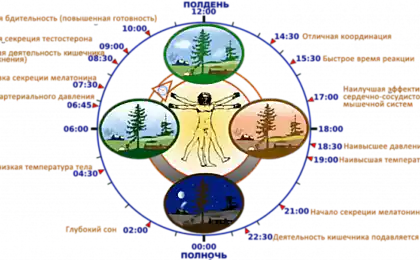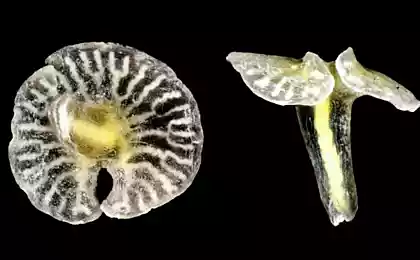716
Japanese scientists have found where living creatures are hidden biological clock
Большой a team of Japanese scientists from several universities in the study цианобактерий found that in the presence of an internal circadian (circadian) rhythm in their answers protein KaiC - small biomolecule diameter of 10 nm. It is responsible for the existence of all living beings biological clock .
Many microorganisms, fungi, plants and animals most visible adjustment to the 24-hour daily period of Earth's rotation around its axis. Part of the plants and animals adapt to this period based on changes in the environment - temperature, light. But it has long been known that living beings have built-in циркадных rhythms , independent of the environment.
Back in the 18th century French astronomer de Meir told the daily movements of leaves at Mimosa pudica (Mimosa pudica). These movements are repeated with a certain frequency, even if the plants were placed in the dark, where no external stimuli such as light. De Meir reasonable to assume that these rhythms, the duration of which he is identified in 22-23 hours, can have anything to do with the alternation of sleep and wakefulness in humans. But their presence in the darkness spoke of endogenous (internal) to their nature.
In 1880, Charles Darwin and his son Francis made an assumption about the hereditary nature of circadian rhythms. Since then, their idea was confirmed - as well as the nature of the endogenous circadian rhythms. In 1984, during the experiments with fungi species Neurospora thick (Neurospora crassa), conducted in space, it became clear that circadian rhythms are not dependent on any kind of geophysical signals were associated with the Earth's rotation around its axis.
Since then, scientists have searched for - where exactly is this timepiece that allows you to measure the usual 24 hours. In 2007 he published a paper showing that the biological clock can be recreated using proteins KaiA, KaiB and KaiC together with аденозинтрифосфатами (ATP). ATP - a compound that plays a key role in energy supply and metabolism. In fact, this compound is known as a universal energy source for all biochemical processes in living systems. In the same paper it was stated that appear exactly KaiC is responsible for circadian rhythms.
Scientists, investigated in detail KaiC , found that this molecule oscillates with a stable period of 0.91 * 24 hours - that is, it is responsible for rhythm, coinciding with the rotation of the Earth. Using high-resolution crystallography, scientists examined the structure of the molecule at the atomic level. Its special structure is the reason for such long-period oscillations in the presence of ATP.
Source: geektimes.ru/post/252636/
Announced the first live broadcast of traffic exoplanets that absorbs light
The hidden danger of social networking.























